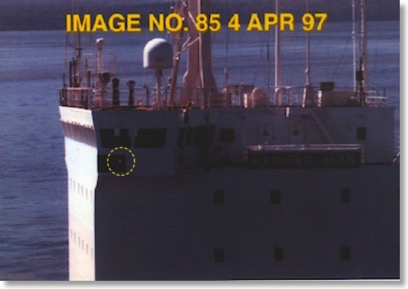Home
A comprehensive resource for safe and responsible laser use
US: UPDATED - News reports quote helicopter pilot who suffered two burned corneas from 1995 laser exposure
Reporter Jim Avila: “We also spoke to helicopter pilot Steve Robertson who suffered two burned corneas from a laser attack.”
Robertson: “You take the vision out from a pilot, that aircraft’s ability to land is greatly compromised.”
A Google search turned up three stories about Robertson’s injury. A November 2010 Glendale News-Press article included the following:
Glendale Police Sgt. Steve Robertson is all too familiar with the consequences of pointing a laser at a helicopter.
Robertson's corneas were severely burned 15 years ago when his police helicopter was flashed with lasers. He said it felt similar to being hit by a baseball bat.
"It's no different than pointing a gun or shooting at a police officer," he said. "It could have the same outcome."
Robertson said he avoided crashing because he was flying with another pilot.
After being struck by the laser, Robertson was taken to a nearby hospital, where doctors scraped his corneas. He returned to work four days later and still has 20/20 vision, he said.
Robertson's injury was the last laser-related injury to the department's helicopter pilots.
A January 2011 NPR report also has information about the incident and injury:
Glendale Police Sgt. Steve Robertson remembers the first time he encountered a laser strike. He says his helicopter was hit by a powerful beam of green light one night while he was on patrol.
"It immediately [lit] up the whole cockpit and it hit both of my eyes and burned both of my corneas," says the veteran pilot. "Instantly, I was blinded. It felt like I was hit in the face with a baseball bat — just an intense, burning pain."
Robertson was momentarily incapacitated and would have crashed if his co-pilot hadn't been able to land the chopper. He recovered from his injuries. But since that incident back in the mid '90s, Robertson says he and his fellow police pilots in Glendale have been targeted dozens of times by people shining cheap, easy-to-buy lasers.
Sources: Dec. 10 2013 video report from ABC News. Nov. 2010 story from the Glendale News-Press. Jan. 2011 story from NPR. Not quoted above is a Feb. 2013 ABC News story; it may have used the same interview clip as the Dec. 2013 ABC News story.
UPDATED JUNE 20 2014: Another story referencing Robertson’s claim of two burned corneas is from CBS Los Angeles on June 19 2014.
US: DOD confirms eye injury to copter passenger; perhaps from Russian vessel Kapitan Man?
Coast Guard and Navy personnel boarded the vessel on April 7 but were unable to find any laser device, or evidence of a possible device. U.S. Navy Lt. Cmdr. Jack Daly was then examined by military laser eye injury experts, who found “there was a high probability that the minor burns on the lieutenant's right retina were caused by multiple laser exposures such as might result from a single glimpse at a repetitive pulsed laser.”

The American naval officer took this photo in the Strait of Juan de Fuca showing a red light on the M/V Kapitan Man. The light led some to suspect a laser. However, subsequent inspection did not find a laser, and in the location of the red light were “two deep red running lights … that met the guidelines established for sidelights.”
The U.S. Defense Department concluded that “[a]vailable evidence does not indicate…what the source of such an exposure might have been. Specifically, there is no physical evidence tying the eye injury of the American officer to a laser located on the Russian merchant vessel.”
The Strait of Juan de Fuca laser incident was also discussed in the August 2004 medical journal Archives of Ophthalmology. The article “Assessment of Alleged Retinal Laser Injuries” describes “Case 5” and concludes that “…[n]o evidence of laser injury was found in the years after the incident by 17 other ophthalmologists, including 5 neuro-ophthalmalogists and 8 retina specialists. A trial was held 5 years after the incident in which the retina specialist who made the initial diagnosis steadfastly maintained all the photographer’s [naval officer’s] symptoms were due to retinal laser injury. A jury ruled against the photographer’s claim for damages against the ship’s owner.… The patient had real complaints, but they were caused by preexisting autoimmune problems rather than by laser injury.”
The full text of the DOD press release, and the “Case 5” study is below (click the “Read More…” link). Additional information above is from a 2011 Washington Times story.